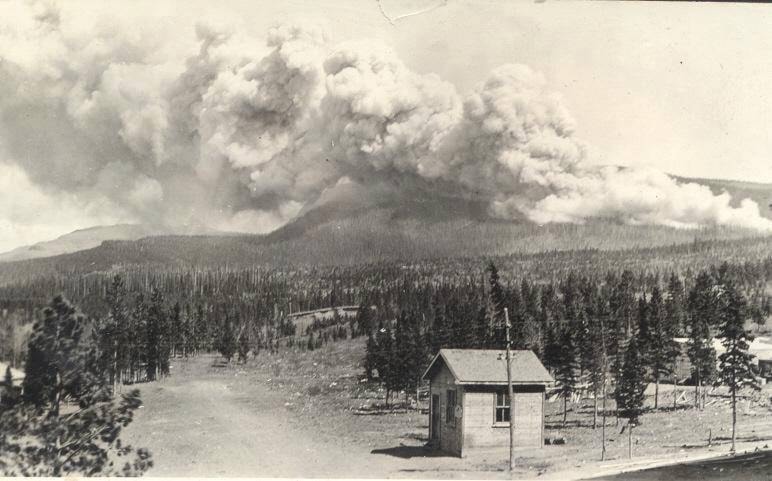Tragically, this year has been marked again by a series of wildfires, particularly in British Columbia and the western United States. These blazes have caused a lot of damage, destroyed homes and businesses, and resulted in evacuations.
While some years are worse than others, wildfires have been a significant problem in Western Canada for generations. John Palliser visited the Red Deer area during a major drought in the summer of 1858. He reported that the district was a scene of “black desolation” as enormous fires had swept across the valley. Those blazes had consumed not only the expanses of grassland, but also the stands of poplar and spruce, which had stood along the river, the creeks and nearby lakes.
In the summer of 1883, Thomas Kains led a party of surveyors in the Red Deer area. He wrote that their work was often hampered by the dense smoke from the fires raging in the wooded districts to the west. In fact, he reported that, at times, it was difficult to make out the survey rods through the smoke, even though the surveyors were standing only a relatively short distance apart.
The threats of fire continued long after agricultural settlement commenced in the 1880s and 1890s. There was very little that the early settlers could do to stop or control the fires once they got started.
They could take some preventative measures, such as clearing and plowing wide fireguards around their homes, barns and pastures. Buckets of water along with pieces of leather, blankets and sacks were kept on hand to try and beat back any embers that drifted into the farmyards and onto roofs.
However, if the fires leapt across these fireguards, or if the embers became too numerous to extinguish, the only course of action left was to flee for the hoped-for safety of nearby sloughs, lakes, creeks and/or rivers. Crown fires were particularly terrifying as the blazes would sweep across the tree tops and then burn downwards.
In order to help with fire control and suppression, many of the first forms of local government in central Alberta were statute labour and fire districts. These local authorities could require settlers to build roads and create community fireguards. Their time and labour would then be credited against their property taxes.
The legal system also provided significant support. The punishments for both deliberately and accidentally setting fires were very severe. Huge fines could be levied by the local magistrates. If the fire was very large and destructive, people could be, and often were, sent to jail.
Nevertheless, fires remained a serious problem. In late April 1892, a huge series of fires swept northward from Gleichen, east of Calgary, to Red Deer. People could see the approaching blaze for days. Only the strenuous efforts of the local residents prevented the fires from consuming the new hamlet of Red Deer. All that blocked the advance of the fire farther north was the Red Deer River.
In 1895, a terrific fire broke out near Ponoka. Within a few hours it had roared southeastwards to the shores of Buffalo Lake. In 1896, a prairie fire near Innisfail raged for four days and blackened over 1000 square km. of land.
Another example of a bad year was 1910. Homes and farms were lost in huge blazes that swept across the Pine Lake, Hillsdown/Valley Centre and Poplar Ridge districts. As well, a major time fire broke out in the Red Deer River Canyon, a few kilometres east of the city. With little means to control it, the fire burned for almost two weeks.
In 1919, huge fires raged by Rocky Mountain House. The annual Red Deer Fair was plagued by heavy amounts of smoke. Spectators in the grandstand soon found themselves covered in ash. The fair board put their best possible spin on the conditions. They stated that the smoky air helped to “cut off the full glare of the hot July sun.” The dry years continued through the early 1920s. There was a brief respite towards the end of the decade. Another prolonged dry cycle set in during the 1930s. It was not until the time of the Second World War that a wet cycle started and the threat of wildfires were greatly diminished.
Red Deer historian Michael Dawe’s column appears Wednesdays.
